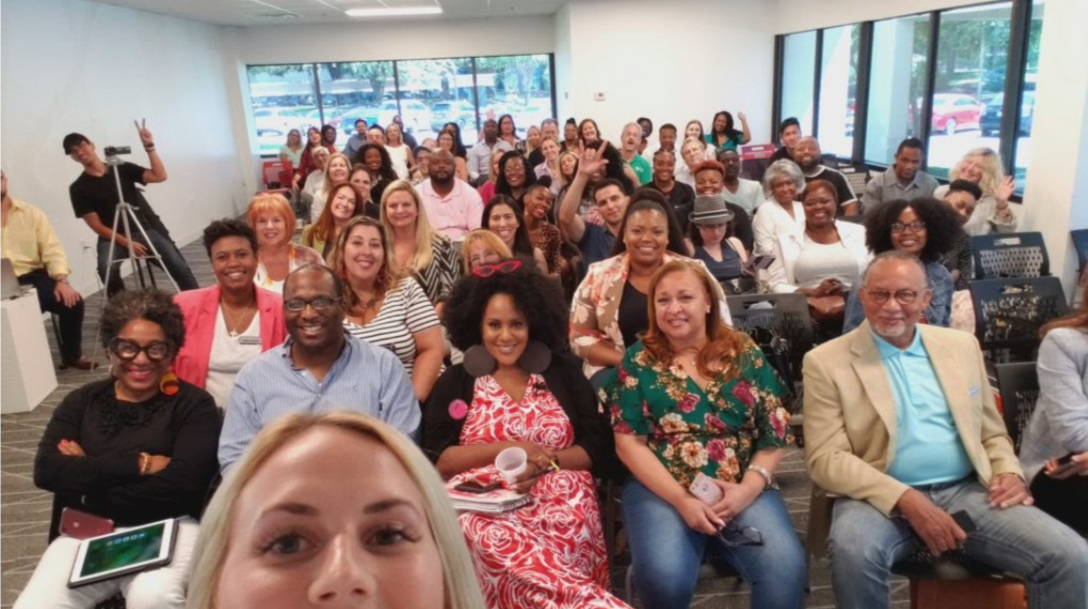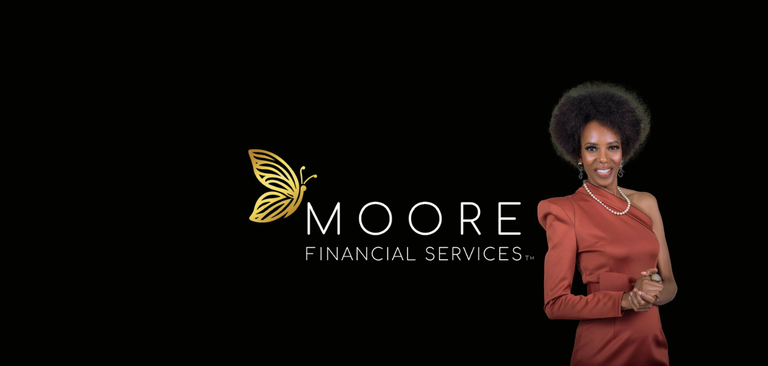
PR Yourself! The Art of Media, Press and Influencer Attraction
If you’re planning an event or have an innovative new product you want to launch, how do you get the word out?
Well, you can hire a public relations firm. That’s what they do; but all that media exposure and expertise doesn’t come cheap. So what do you do if you’re a small startup or you have a limited budget?
You PR yourself
The internet and social media have democratized access to the public. With a little research and a few clicks, you can potentially reach millions. But before you start blasting spam all over cyberspace, you may want to hear what Leah Frazier has to say about public relations and doing it for yourself.
Frazier spoke to a packed house at a recent CityCentral Speaker Series event sharing her unique knowledge and expertise in public relations. Her presentation, “PR Yourself! The Art of Media, Press and Influencer Attraction”, was a do-it-yourself primer on how to get media coverage.
If anyone knows PR, it’s Leah Frazier. She’s the owner of the creative marketing agency Think Three Media and a multi-licensed attorney who built a multi-faceted empire as an award-winning fashion journalist, media personality, celebrity stylist, digital marketing expert and in-demand fashion consultant to big-name brands.
She is a best-selling author and she’s won more awards and honors in multiple fields than we have space to print here. So when she gives tips on how to PR yourself, people are going to listen.
What is PR and when do you need it?
Public Relations (PR) is nothing more than media coverage. It can be a news article, a radio spot, an appearance on a talk show or a mention by an online media influencer.
Frazier said she usually sees three stages where companies need public relations (PR).
Launch of a new product
If you have an innovative new product or app, you need media exposure to generate interest and so the public (customers) can hear about it. This is the most common reason companies seek PR services.
But be careful putting information out there before your product launch is ready.
“Where a lot of people go wrong is that you’re so excited, you get on social media and tell all the bells and whistles about your product before it’s ready to hit the market,” Frazier said.
It makes it difficult to pitch a product as new or innovative – the two hottest terms for products – if you’ve already been talking about it publicly before the launch. So keep it under wraps until you’re ready to go live.
Trending Topics
Staying aware of what’s trending online is crucial. You can get great PR by presenting yourself as an expert on topics trending in the news. This works best for personal brands, CEOs and executives.
For example: Sustainability is a huge trending topic. If your company uses 100% recycled fabric to make clothing, that is a topic you could present yourself as an expert on to the media. Journalists and reporters are looking for people like this all the time, especially if it’s a dead news day.
Some good ways to stay on top of trending topics:
- Google Alerts (here’s how to set one up)
Major Event
If you’re planning a product launch party, fundraiser or a panel you want media there. This isn’t so much for coverage as it is about having media people there to know what’s going on. There are plenty of publications that cover major events on their own (like PaperCity).

Getting prepared: What’s your angle?
You know you need PR and you’re ready to start contacting the media. The next question you have to ask is: What’s my angle?
How are you going to pitch your product, company or yourself to the media in a way that would make them want to write a story about you or give you airtime?
To know your angle, you have to know two things:
Your Brand Story
“I’ll say it a million times,” Frazier said. “You have to know your brand story.”
What’s the story of your product or service? What makes it unique and sets it apart from your competition? Why are you doing it?
You have to be able to tell your brand’s story quickly and concisely, in no more than two sentences.
Your Media and Journalists
You have to know the television shows, newspapers, magazines, and journalists you are pitching to and tailor your pitch accordingly. A daytime broadcast has a different audience than one in the evening. A fashion journalist covers different stories than a food critic.
“You can’t pitch the same press release across all markets.”
It’s a good idea to watch the shows and read journalists’ articles in the media you want to interact with. Actually follow them, be a fan of their show. Interact with them on social media in a meaningful way (just don’t tag them on a bunch of random stuff, that’ll get you blocked).
When tailoring your angle, always think that you can provide a solution or scoop to something that is hot, new or fresh for their audience. And always come prepared with more than one angle. Frazier says she has at least four to pitch.
The Press Kit
You’ve got your angle and four pitches. Now you need your press kit.
A press kit needs to be professional. Let me repeat that more forcefully: your press kit HAS TO BE PROFESSIONAL. Anything that looks amateurish is going to kill any hopes for media coverage.
It doesn’t cost much to have a professional write your press release or take professional photographs. If you’re not a writer or photographer, this is what you have to do to make it look slick – and professional.
What a press kit includes:
- General Press Release
- Company Bio and Info
- Testimonials
- Bio and Headshots of Founders/Core Members
- Press Clips and Media Mentions
- Details of Awards Received
- Videos or Photos of Products, Events, Etc.
The Press Release
A press release is a communication to the media announcing something newsworthy, ie. your product, service or event.
The most important thing about a press release is the headline. It has to be killer – interesting and punchy enough to grab the attention of whoever is reading it.
The content has to get to the point in the first paragraph – hit the 5 W’s (who, what, where, when and why). It should include quotes and relevant facts. You also want a link back to your website included in your press release.
And above all else, use grammar and spell check. Do it once, then do it again.

Making The Pitch
After you’ve got your press kit ready you can start pitching to the media and journalists.
Most of this is going to be done via email. Often, a journalist’s email address will be near their byline. Most television shows and news channels will have a contact tab on their website.
Journalists get hundreds of emails a week, so a way to stand out is having something interesting and catchy in the subject line of your email.
Keep your emails short, to the point and as personalized as possible. If you’ve prepared four angles, press releases and have been following the media or journalist you’re contacting, this won’t be a problem.
One of Frazier’s first pitches was to Good Morning Texas. She sent a press release through the contact page pitching herself and a hot new fashion trend with local designers. She was successful and got on air.
How you can contact the media:
- On the web (email)
- Other Social Media
- Pick up the phone and make a call
You’ll need to be prepared for an immediate appearance should you be contacted for an interview. There’s no rescheduling or “Can I do it on Thursday?”.
Have everything in order: website, social media, etc.
Social Media Influencers
They’re all the rage on social media – those kids snapping pics of their gourmet avocado toast or stopping traffic for the perfect Instagram selfie.
They’re the social media influencers. And because they have thousands of followers and the power to instantly make your product go viral, it’s not a bad idea to partner with them. You should make sure that they align with your brand.
Some of the questions Frazier asks when considering to work with an influencer:
- Do I like the language they use?
- Do their pictures and photography align with my brand?
- Are they responding to people who are asking questions about the products and services they’re posting about?
- What does their engagement look like?
- What does their website look like?
- What are their terms?
- Can they tell me what they love about my brand and why they want to work with me?
You need to make doubly sure partnering with them aligns with your company if they are asking for money or free products.
Tips for working with influencers:
- Set aside an influencer marketing budget
- Research (hashtags, agencies, web search)
- Use an agency
- Design a campaign that fits both your needs and the influencer’s
- Put your deliverables into an influencer agreement
- Require they submit links and posts for tracking
- Use software to track their engagement and reach
- Build long-term relationships with the best influencers – consider a brand ambassadorship
You can go the traditional route and hire a PR firm, it’s not hard to do. A simple Google search can help you find an agency that specializes in your particular product line or service.
But if you’re up to the challenge, use Leah Frazier’s advice and PR Yourself.
Check out Frazier’s co-authored book, “The Success Factor”, which reached #1 as a Best Seller for Women and Business reads.
Don’t miss another event, follow us on Facebook, Instagram, and LinkedIn.


